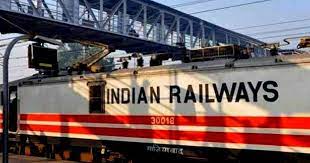Growing debt of Indian Railways!
By M.Y.Siddiqui
Indian Railways (IR) is downhill the sickness path despite
part privatization of earning and profitable blue chip assets like the
Container Corporation of India (CONCOR), Indian Railways Catering
and Tourism Corporation (IRCTC) and remunerative high yielding
operational tracks with further depressing signs of growing debt,
designed to make it bankrupt and unviable with privatization
(corporatization) of several other assets like unutilized surplus land,
stations, railways stadiums, Dedicated Freight Corridors (DFCs) yet
to be operational, in pipeline. It also remains under invested under
the current NDA union government, dependent as it is on private
investments, which are not forthcoming as IR is high capital intensive
with long gestation period making it least or nil profitable for the
private investors. Current RSS Pariwar union government is all out to
sell out all national assets including the IR.
Borrowing arms of IR, the Indian Railways Finance
Corporation (IRFC) has raised from domestic capital market and
External Commercial Borrowings (ECBs) a cumulative sum of Rs.
5.04 lakh crore till March end 2022. In the current financial year
2022-23 the borrowing target is Rs.60, 500 crore compared to Rs.60,
683.41 crore in 2021-22. Added to this, Rs. 100,000 crore loan from
Japan for Ahmedabad-Mumbai-Ahmedabad bullet train, Rs. 150,000
crore from LIC borrowed for upgradation, renewal of rail assets and
expansion and several tranches of loans taken from the World Bank,
Asian Development, bilateral and multilateral sources make it to over
Rs. 10 lakh crore. In addition, there are thousands of vacancies, which
are not being filled up.
Merger of Railway Budget with the General Budget in 2017
freed the IR from paying annual dividend on capital at charge to the
General Exchequer giving the initial impression that railway finance
would improve further. But that has not happened. On the contrary,
Operating Ratio (OR) of railways has sunk to the lowest. Working
expenditure is now more than the revenue from earnings of
passenger and freight traffic as also from sundry sources. This has
prompted the IRFC to expand its sources of borrowings for IR from
the World Bank, New Development Bank, National Bank for
Financing Infrastructure and Development (NBFID) and several
other European banks to its list of borrowing sources, thus drowning
the IR further under the debt trap from which it would be difficult for
the railways to come out.
Even before the pandemic induced crisis, IR was in dire
financial straits. Its total capital expenditure (CAPEX) was Rs.148,
065 crore in 2019-20 rising to Rs.161,692 crore Revised Estimates in
2020-21, further to Rs.215,058 crore in financial year 2021-22
Budget Estimate. Investments in IR carry high costs following higher
CAPEX share through extra-budgetary resources/market
borrowings. IR’s own funds have aggregated to below 3 per cent of
the total CAPEX, during the last few years.
Post the pandemic induced lockdown; IR has been
maximizing resource utilization and accelerating asset velocity. Yet
its performance has gone down. Productivity indices of its high value
assets has been declining miserably amidst stagnant traffic
throughput resulting in its pricing assets becoming chronic with its
multifarious problems like bureaucratic obese structure, public
service obligations in democratic frame, warped investment
priorities, empire building by departments, capacity crunch on
arterial routes, strained terminals, irrational fair and freight
structures. It has lost constantly share in country’s freight and
passenger traffic with growing capacity crunch. With the growing
market dynamics, multimodal whole journey would be a necessity.
IR’s passenger services need to be revamped and core freight
business strategized further to make it financially viable.
IR’s productivity has sunk to its lowest since 2014-15
because of growing privatization, low morale of work force,
increasing contractual employees, privatization of passenger and
freight services on remunerative arterial routes, sale of its assets and
ever increasing debt trap through market borrowing as well as
bilateral and multi-lateral foreign debts, besides the present NDA
Union Government’s apathy to make the railways a meaningful
national public services.
However, there is still some silver lining in that private
players are still wary over long gestation period between
investments and its fructification in a high capital intensive railways
subject to faster rusting and corrosion and for that matter faster
depreciation of its assets. Failure of Sate Governments to concur with
the Central Government over unified central command of security on
railways involving amendment to the Constitution with policing and
law and order being State Subject, raging turf war between Centre-
States over policing of railways, fear of people squatting over railway
tracks blocking traffic every now and then over various grievances
including local ones etc. are some of the major issues inhibiting
private sectors in rail operations.
Privatisation of rail operations is still far off. It may be
possible only when the present Constitutional democratic
governance is abrogated and a formal Hitlerian authoritarianism
takes over.! However, other assets, logistics, passenger amenities, etc.
can be privatized. There is no obstacle to that. So far, there is no
taker.
Powered by Froala Editor




LEAVE A REPLY